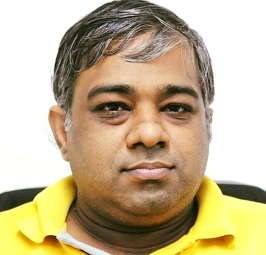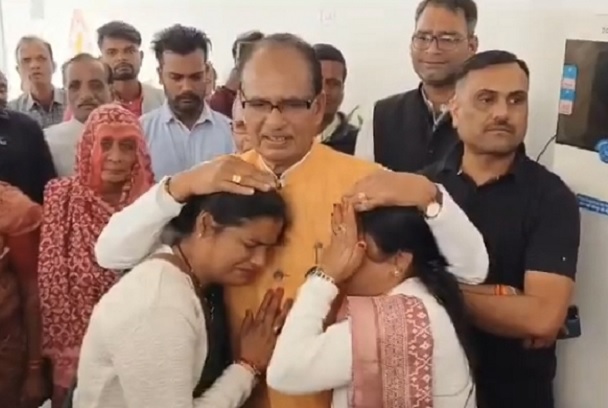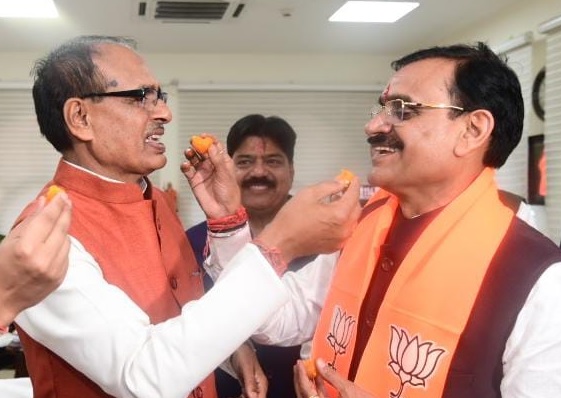Book on Mohsina Kidwai deals with Meerut riots, turbulent 1980s and Indian Muslim politics
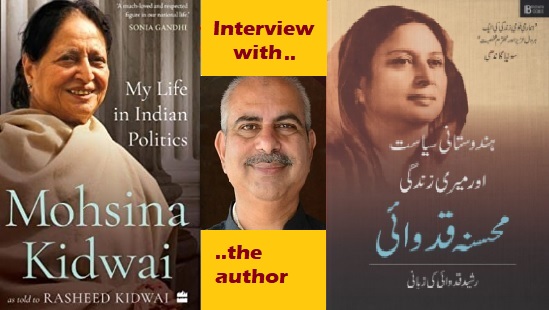
Shams Ur Rehman Alavi
NewsBits.in
BHOPAL/LUCKNOW: [Here is an interview with the author Rasheed Kidwai regarding his book on Congress' veteran leader, MP and former governor Mohsina Kidwai. The book has generated lot of interest from different quarters, ever since its launch]
Q. Mohsina Kidwai has had a long innings in politics and is a prominent figure. But what exactly made you decide to tell the story of her life and politicial journey?
Rasheed Kidwai: A cursory look at the elected representatives to the Indian parliament reveals a telling yet largely glossed over fact—barely 20 Muslim women have made to the Lok Sabha so far from among nearly 9000 MPs voted since 1951. Out of the 17 Lok Sabhas constituted till May 2019, five times, the lower house of parliament did not have a Muslim women member. Equally shocking is the fact the number of Muslim women elected to parliament never crossed a mark of four in the 543-seat lower house of parliament.
According to noted French scholar Christophe Jaffrelot, Muslim women face a double bind—discriminated against both as women and as Muslims. His sentiments find echo in Gilles Verniers, a political science professor at Ashoka University when he observed, “In terms of cumulative discrimination—being a Muslim and being a woman—there is a compounding effect for sure.
The usual barriers to entry that apply to all women, apply even more strongly to Muslim women.” Mohsina Kidwai, hailing from an aristocratic Muslim family of Avadh, holds a distinction of winning Lok Sabha thrice—in 1978, 1980 and 1984. Her parliamentary credentials are remarkable having won from Azamgarh (the Lok Sabha bypoll marked the great comeback of Indira Gandhi) in the eastern Uttar Pradesh and Meerut from Western side of the state. Anyone remotely connected with the socio-economic condition of Uttar Pradesh and caste matrix or observing the related fundamentals would vouch that finding acceptability in these two diverse regions is a rather insurmountable task.
I think the special part in Mohsina Kidwai is on account of her simplicity in public life, probity and ability to act judiciously as a public representative. In May 2016 when Mohsina Kidwai ceased to be Member of Parliament, there was a sense of fulfilment. But it also came with a worry. The former housing Minister for the rest of India did not have a house of own in the national capital or anywhere else except for ancestral, joint ownership property in Badagaon.
For those wary of the political class, one should get a sense of what probity in public life means for a person who has been the country’s transport (including railways,civil aviation and surface transport), health and housing Minister for a decade and a Cabinet Minister in Uttar Pradesh. In leading such Spartan life, Mohsina Kidwai or none of her close relatives ever felt doing something extraordinary.
On the political front, what distinguishes Mohsina Kidwai from many others in the Congress, is that she was never shy of speaking her mind or sharing candid thoughts, without crossing the Lakshman Rekha (or rubicon) of party discipline. A lot has been written about Shah Bano Begum Judgment and Rajiv Gandhi government’s move to overturn, Ayodhya imbroglio, Congress ties with the Samajwadi Party, Bahujan Samaj Party, communal riots, Mamata Banerjee, tackling issues of probity and other momentous events of post-independent India. I can share with confidence that had the political leadership heeded to the sound advice tendered by Mohsina Kidwai at that point of events, the course of the country’s s politics and contemporary history would have been far better
and fruitful
Q. She was member of parliament from Meerut and it was once a city that had become infamous for communal riots. Does the book throw light on this aspect?
Rasheed Kidwai: Yes to a great deal. I think she has not been overtly defensive about it but a full chapter has been devoted on Meerut communal riots. You must be aware that over 15,000 lives in 58 major riots were lost before the Godhra carnage of 2002 burnt itself forever into the collective consciousness of the nation.
Let me quote from Mohsina Kidwai’s memoirs for the benefit of our readers, “While I would win from the city again in 1984, Meerut’s tradition of peace had shattered in September 1982, a little more than two years and a half into my stint as MP from the constituency. By the time elections were held again in 1989, frequent riots had vitiated the atmosphere. My defeat in the Lok Sabha elections in 1989 had a lot to do with these incidents of violence that I tried to quell, while criminal elements and Right-wing Hindutva parties had a field day.
Let me say this upfront; communalism, majoritarianism, riots, arrest of innocent people on the charge of sedition and selective use of law have been blots on our otherwise vibrant and participatory democracy. Dissecting communal violence is always tricky, although most people blame district authorities for ignoring signs of an impending explosion. Meerut was no exception. The district administration failed to win the confidence of the two communities and was afraid to take unpopular measures.”
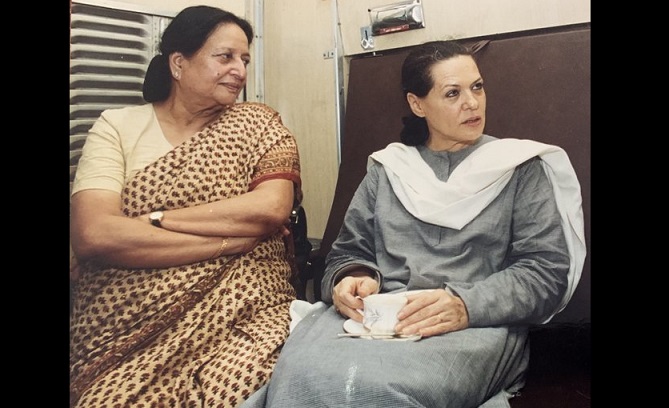
Q. As a politician, do you think Mohsina Kidwai managed to get success, especially, in terms of benefits for her voters, constituency, state or community.
Rasheed Kidwai: I think yes. She largely maintained a pan Indian identity and was not identified as a “Muslim face”. Her voters in Azamgarh and Meerut cut across communities and sects, something we find somewhat missing in the North India belt when Muslim politicians contest from urban areas.
Q. The decade of 1980s was a turbulent period. The Hashimpura and Maliana massacres took place in this era. The role of Congress and inaction of its leaders in UP, finally led to Muslims severing their long link with the party. Does the book focus on this aspect?
Rasheed Kidwai: She has tried addressing all of this: please sample this about 1982 riots. “The violence that broke out was over a minor disagreement — a 200 sqft property claimed by both communities. But the impact was huge — dozens of deaths and property worth crores of rupees were damaged.
A report published by India Today then had said, “As always in such conflicts, it was the poor and the underprivileged who had to bear the brunt of the violence. The conflict started as a religious one. It turned quickly into a confrontation with the Muslims on one side and the Scheduled Castes and Scheduled Tribes on the other. Then it developed beyond that into a stand-off between the district administration and the minority community."
She also says in her book leaning on India Today, “The biggest problem for the district administration, turned out to be the Provincial Armed Constabulary (PAC) that was pressed into service in different parts of the city. The PAC did not have the confidence of the people. More than 20 companies of PAC men were stationed around the town and as the riots progressed, there were allegations that they were terrorising Muslim localities by resorting to unprovoked firings.” I would advice Newsbits.in readers to read the book.
Q. Among Muslim community, there was often a feeling in a section that Mohsina Kidwai could do much more when the region saw communal conflagration but she didn't do enough. As a journalist, author and writer, how far do you think is the perception justified?
Rasheed Kidwai: I think its is little unfair. In a constitutional democracy, rule of law must prevail and institutions == police, judiciary, executive, civil society, media should all act swiftly, decisively. A Muslim championing the cause of the Muslims may be good optics but it is bit of grand standing and heroic and may I add, anti the very grain of secular polity.
In Mohsina Kidwai’s case, she did try to intervene and influence but without rushing to the media. You will get glimpses of it in the book. In my introduction I have said earlier and I say it again, “A lot has been written about Shah Bano Begum Judgment and Rajiv Gandhi government’s move to overturn, Ayodhya imbroglio, Congress ties with the Samajwadi Party, Bahujan Samaj Party, communal riots, Mamata Banerjee, tackling issues of probity etc and other momentous events of post-independent India. I can share with confidence that had the political leadership heeded to the sound advice tendered by Mohsina Kidwai at that point of events, the course would have been different.”
Also communal riots and violence are a complex interplay. Please read this passage from her book and ponder, “It is worth remembering that Meerut, throughout the 1980s, was one of the richest districts of Uttar Pradesh. One-third of the sugar produced in the state comes from the district and it was famous for its steel goods, too. Meerut is also known for its handloom industry that employs over 70,000 Muslim artisans. What the repeated incidents of violence also did was explode the myth that economic prosperity and education reduce communal tensions in a society. Or, was there something more sinister that kept unfolding in the years to come? I leave that to the wisdom of this book’s readers.”
Q. Mohsina Kidwai was close to top leaders of the Congress. Why we didn't see her open major educational institutions in the state?
Rasheed Kidwai: I think institution building is a major task that requires government, intelligentsia, community, industry cooperation. She did try in her own way and there are many in Barabanki in addition of her behind the scene role in many educational institutions in Maharashtra, Karnataka, Andhra etc but we cannot be comparing her with Zakir Hussain.
In any case, all comparisons are unfair. She has been part of the journey of india’s growth and big strides in education. In her long political career, she must have seen different facets of society. Does she offer any remedy to the problems faced by Indian Muslim community or has any vision in this regard
I think she is a firm believer in steadfastness, faith and hard work. Please sample this from her book, ‘I firmly believe that the basic teachings of Islam do not discriminate much between men and women. It is largely due to the cultural and social ethos of Muslim societies and their human failings that such perceptions of inequalities have evolved.
Also we need to remember and grasp her focus on Indian-ness blending with Muslimness when she says, “We need to also remember that the contemporary ethnic India is an accumulation of several cultures, religions, languages and evolutionary histories and Muslims are no exceptions. Since its introduction into Indian subcontinent, Islam has made significant religious, artistic, philosophical, cultural, social and political influences to Indian history. Muslim traders, mystics, preachers and invaders have shaped and influenced Indian subcontinent for thirteen centuries ensuing significant cultural diffusion of Muslim traditions among the ethnic Indian population till date.





